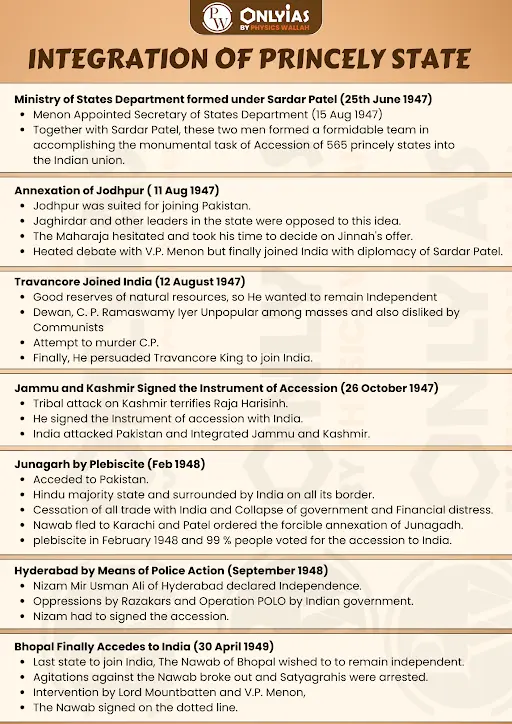![]() 25 Nov 2023
25 Nov 2023
At the time of Independence, India comprised British India and the Princely States. The Princely States covered about two fifths of the geographic territory and had 1/3rd of the population of the British Empire. These Princely States were littered all over India and The fate of 86 million people was at stake.
Sovereign Province: Autocracy, Communalism, and Power Dynamics in Princely States
The intensification of the nationalist mobilisation brought a few princes into the -political arena. They participated in the imperial conferences and the indigenous associations. Initially, the British used them for seeking legitimacy for their rule in India. The Indian leaders also turned to the princes for financial patronage.

Integration of Princely States: Diplomacy, Democratization, and the Evolution of Modern India
<div class="new-fform">
</div>